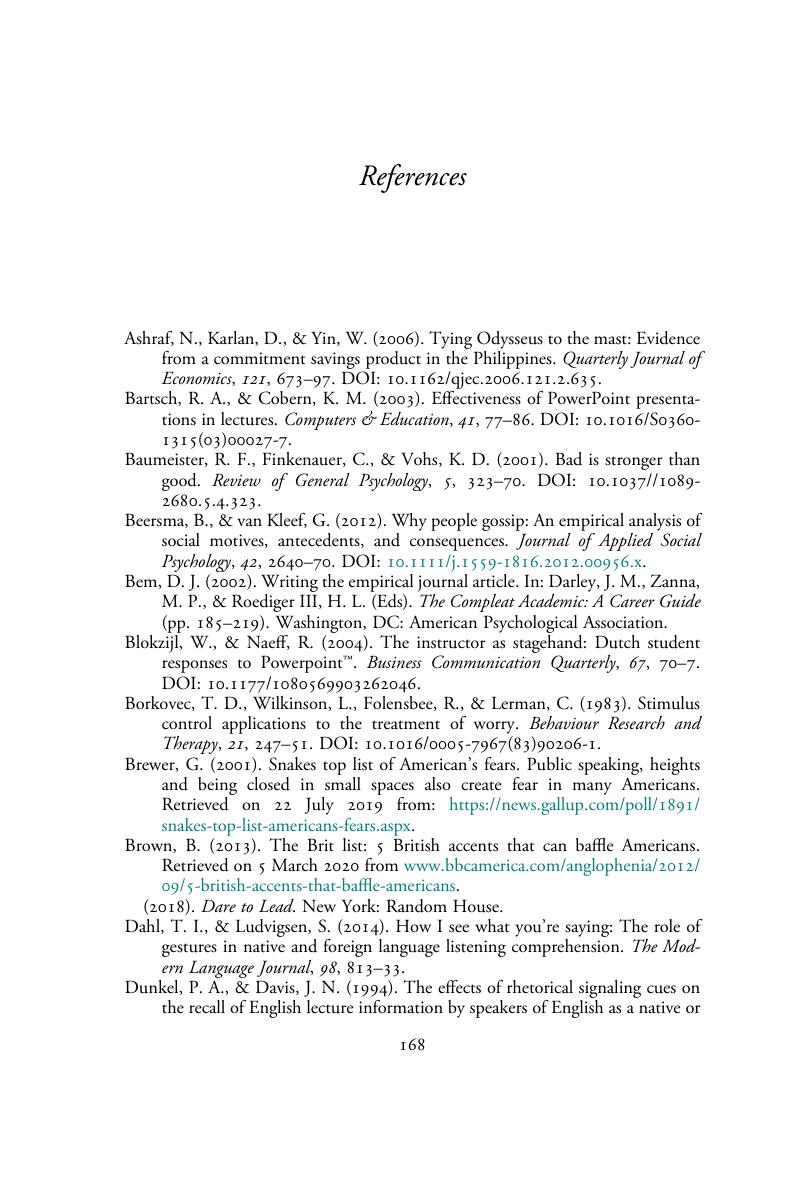References
Published online by Cambridge University Press: 15 August 2020
Summary

- Type
- Chapter
- Information
- The Art of PresentingDelivering Successful Presentations in the Social Sciences and Humanities, pp. 168 - 170Publisher: Cambridge University PressPrint publication year: 2020



